White poplar
Populus alba
River banks and the areas around them have their own plant life, which is called riparian vegetation. It forms a characteristic border that follows the course of the river. Riparian woods include a wide range of flora and fauna. This plant life has an important role in the ecosystem, and acts as:
The resource page has an identification key to help you identify riparian vegetation.
White poplar
Populus alba
Black poplar
Populus nigra
Aspen
Populus tremula
White willow
Salix alba
Grey willow
Salix atrocinerea
Bitter willow
Salix elaeagnos
Purple willow
Salix purpurea
Whitebeam
Sorbus aria
Checker tree
Sorbus torminalis
European ash
Fraxinus excelsior
Field Elm
Ulmus minor
Common alder
Alnus glutinosa
Common hazel
Corylus avellana
Field maple
Acer campestre
Italian maple
Acer opalus
Montpellier maple
Acer monspessulanum
Large-leaved lime or linden
Tilia platyphyllos
Common hawthorn
Crataegus monogyna
Dog rose
Rosa canina

Blackberry
Rubus sp
Elder
Sambucus nigra
Common ivy
Heredera helix
Bloody dogwood
Cornus sanguinea
European box
Buxus sempervirens
Blackthorn or sloe
Prunus spinosa
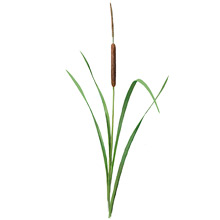 Bulrush
Bulrush 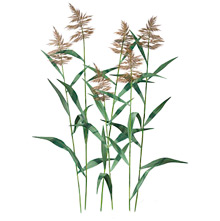 Common reed
Common reed The river headwaters have species adapted to cold temperatures and steep slopes.
Riparian vegetation specific to Mediterranean areas is characterised for its ability to survive very dry summers and highly variable precipitation throughout the year, and even over several years.
 Lesser bulrush
Lesser bulrush Species adapted to extreme drought situations are found in rain-fed and ephemeral rivers, due to their ability to cope with a prolonged lack of water and their resistance to sudden rainstorms.
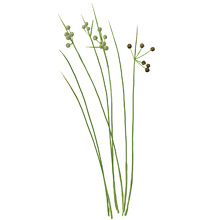 Round-headed clubrush
Round-headed clubrush Plant life that has adapted to high levels of saltwater may be found in some wetland areas and lower river stretches.
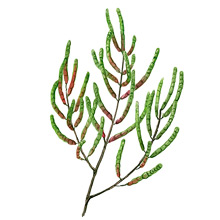 Samphire
Samphire Human intervention (wood cutting, earthmoving, etc.) and other disturbances give invasive species the opportunity to settle on river banks. These species are a significant threat, as they replace native species and may cause important changes to the riparian environment. They sometimes form mono-specific populations without any natural value. Invasive species need to be controlled and more importantly, new introductions need to be prevented.
*Invasive species are considered to be those that proliferate in an area in which they are not native and where they have appeared due to the actions of Man.
 Weeping willow
Weeping willow 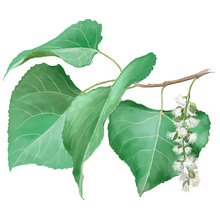 Canadian poplar
Canadian poplar  Common bamboo
Common bamboo Illustrations: © Toni Llobet